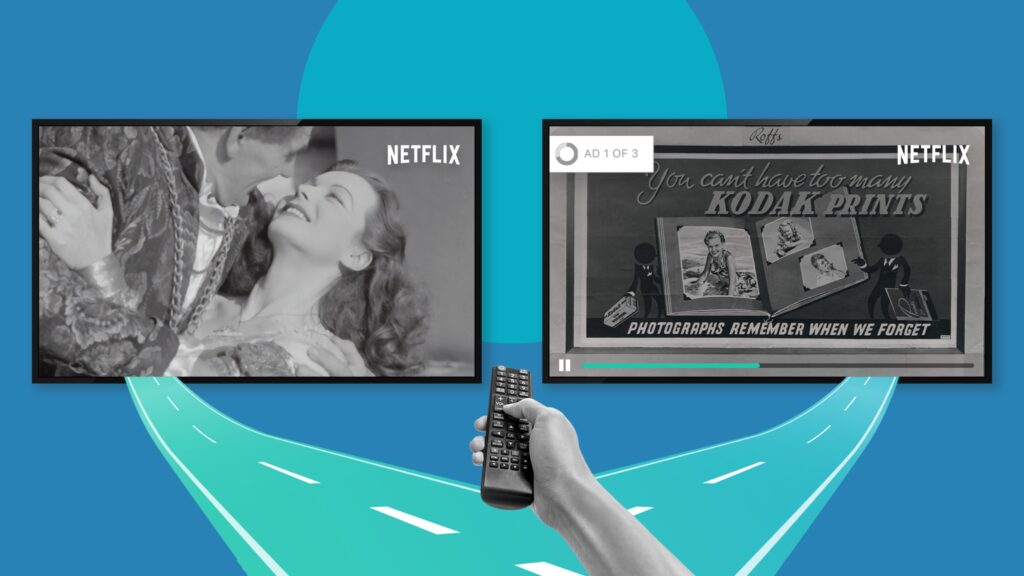From the MNTN Slack: What Netflix’s Q1 Report Signals About the Future of Streaming
by Cat Hausler
8 Min Read
CES 2024: Stagwell (STGW) and MNTN Announce Partnership in Unified Performance SolutionsLearn More
As streaming companies find ways to cover costs, consumers and advertisers might feel the pinch.

4 Min Read
After a strike that lasted merely five months, the Writers Guild has officially reached and ratified an agreement with studios and streamers. But the story of the strikes doesn’t stop there. The SAG-AFTRA strike continues to drag on this week due to failed meetings and flopped proposals, and we’re already starting to see some of the ramifications of these strikes affect the industry.
After all, with the new contract — and another possibly on the horizon — entertainment companies are now on the hook for at least an extra $233 million a year. And it looks like streaming services are planning to pass that buck along to consumers and advertisers.
At the time of the WGA agreement, eMarketer predicted that studios and streaming services would find ways to recoup those costs through higher subscription fees and CPMs. Last year, advertisers saw historically high asking prices on CPMs during the 2022 Upfronts. Those CPMs have mostly leveled out this year, but that will very likely to change for future upfronts in response to this (and future) deals.
And while we have yet to see how ad costs will play out next year, hikes in streaming prices are definitely already on the table. One streaming company in particular has been making headlines this week for doing just that: Netflix.
Netflix does like to go first. This time, they are the first to announce their plans to hike prices after the writers strike.
Starting this week, the streaming giant will be raising the price of their premium ad-free tier from $19.99 to $22.99 per month. And while their cheaper ad-free plan (Basic) will also see a price hike of two dollars a month, that’s only a temporary move. Instead, Netflix plans to phase out that tier — making it only available for legacy subscribers for now, and eventually removing it as an option altogether.
The streaming service has been looking for ways to draw users into their ad-supported tier to make it more attractive to advertisers. According to their CEO, Greg Peters, as expressed during their earning conference call last week, growing their ad-supported memberships is Netflix’s number one priority. “The second priority is delivering features and products that advertisers want,” he said.
And Netflix’s ad-supported tier is finally getting some traction this year, with 8.8 million more members in Q3 (compared to the just 2.4 million added during the same time last year). These days, around 30% of new members are signing up for the ad-supported tier in countries where it’s available.
Ultimately, whether consumers now sign up for the expensive ad-free tier or the cheaper ad-supported option, Netflix wins.
Think these kind of price hikes on subscription streaming services are highway robbery? You aren’t alone. A recent survey from Recurly found that while households subscribe to at least five streaming services on average, 46% of consumers also canceled a subscription due to price increases in the last year.
But it’s not all bad news bears for the streaming industry. One type of service has been a big winner in the midst of all of this hullabaloo (and as a result, advertisers are too).
These days, many consumers have been turning to free, ad-supported streaming services (FASTs) to save costs. One analysis from Kantar found that FAST channels saw a 7% surge in growth during Q3, with 47% of American households streaming through FASTs every week. With this increase, FAST adoption outpaced subscription video-on-demand (SVOD) by double the households.
Kantar also attributes some of this rise in consumer interest to the recent slowdown of content releases in light of the strikes. FAST models are less reliant on the latest, greatest releases to studios, making them even more appealing as we enter a new-content drought. Ultimately, in a time when subscription fees are through the roof, FASTs give consumers access to niche, legacy content at a price point they can stomach.
Other CTV News You Need to Know: